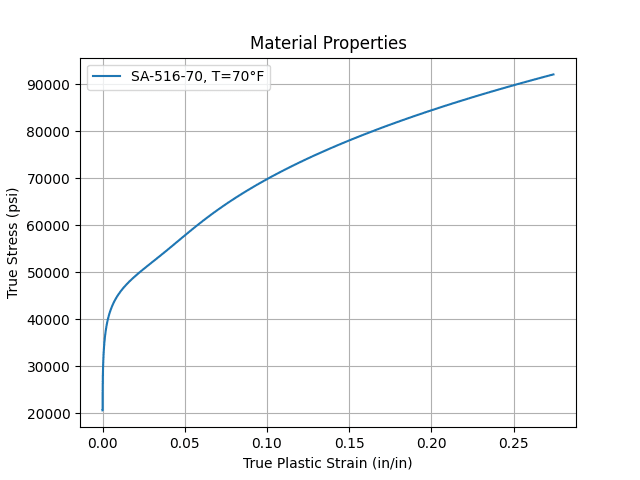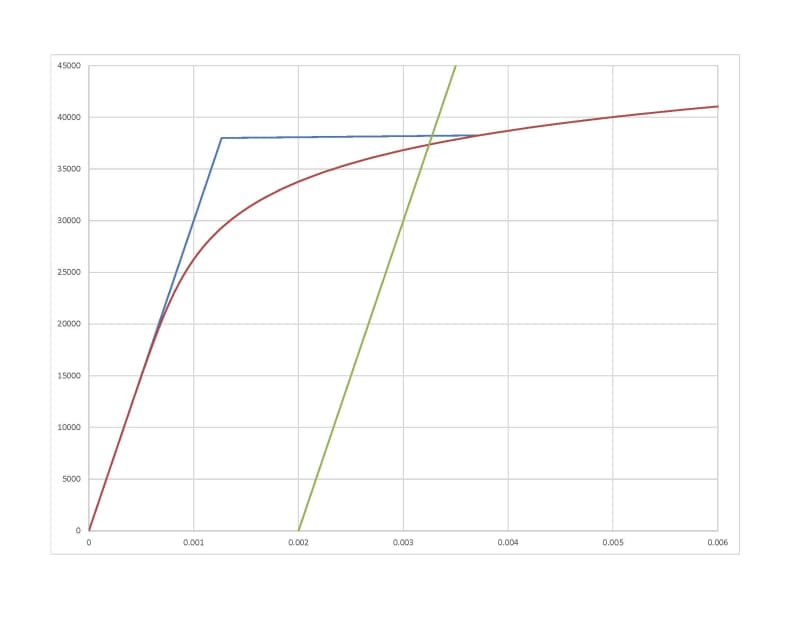Hello, I am following Annex 3D.3 of VIII-2 for developing a stress-strain curve to be used in an Elastic-Plastic analysis and had a few questions.
Currently, I am doing the following (true plastic strain plot only since I am using Abaqus):
1) Solve for stress at the proportional limit which is when the true plastic strain (gamma1 + gamma2) equals e_p.
2) Plot from this stress to true UTS in small increments
3) The curve from 0 to e_p follows a slope of Sys / E
Is this the correct approach? I've attached a picture of a curve I generated.
[ul]
[li]Sys = 38 ksi, UTS = 70 ksi[/li]
[li]Stress @ Prop Limit = 20,620 psi and true UTS = 92,091 psi[/li]
[/ul]
If one did not follow these steps and ignored the proportional limit, could it be unconservative to use a material curve from the engineering yield stress to the true UTS?

Currently, I am doing the following (true plastic strain plot only since I am using Abaqus):
1) Solve for stress at the proportional limit which is when the true plastic strain (gamma1 + gamma2) equals e_p.
2) Plot from this stress to true UTS in small increments
3) The curve from 0 to e_p follows a slope of Sys / E
Is this the correct approach? I've attached a picture of a curve I generated.
[ul]
[li]Sys = 38 ksi, UTS = 70 ksi[/li]
[li]Stress @ Prop Limit = 20,620 psi and true UTS = 92,091 psi[/li]
[/ul]
If one did not follow these steps and ignored the proportional limit, could it be unconservative to use a material curve from the engineering yield stress to the true UTS?


